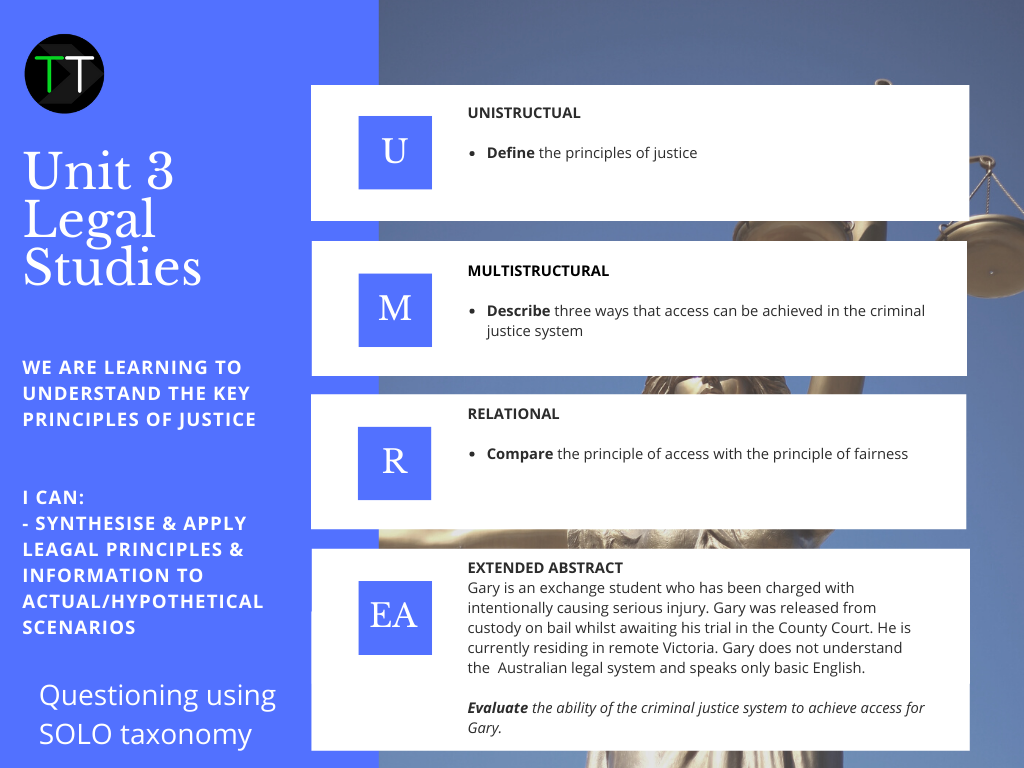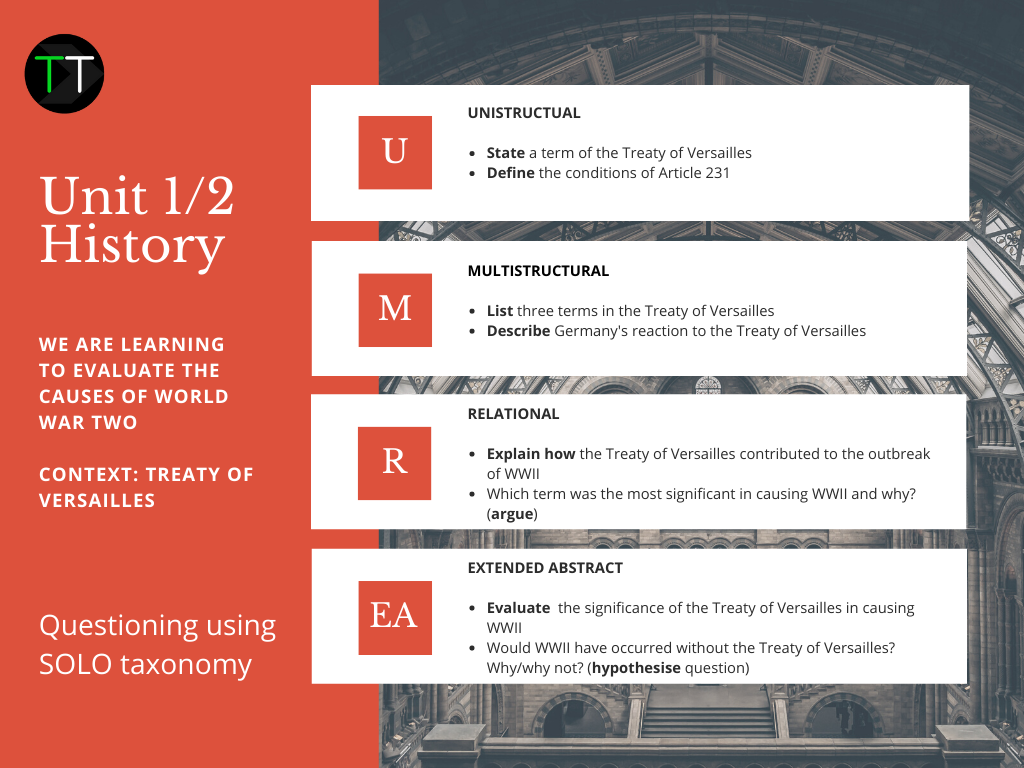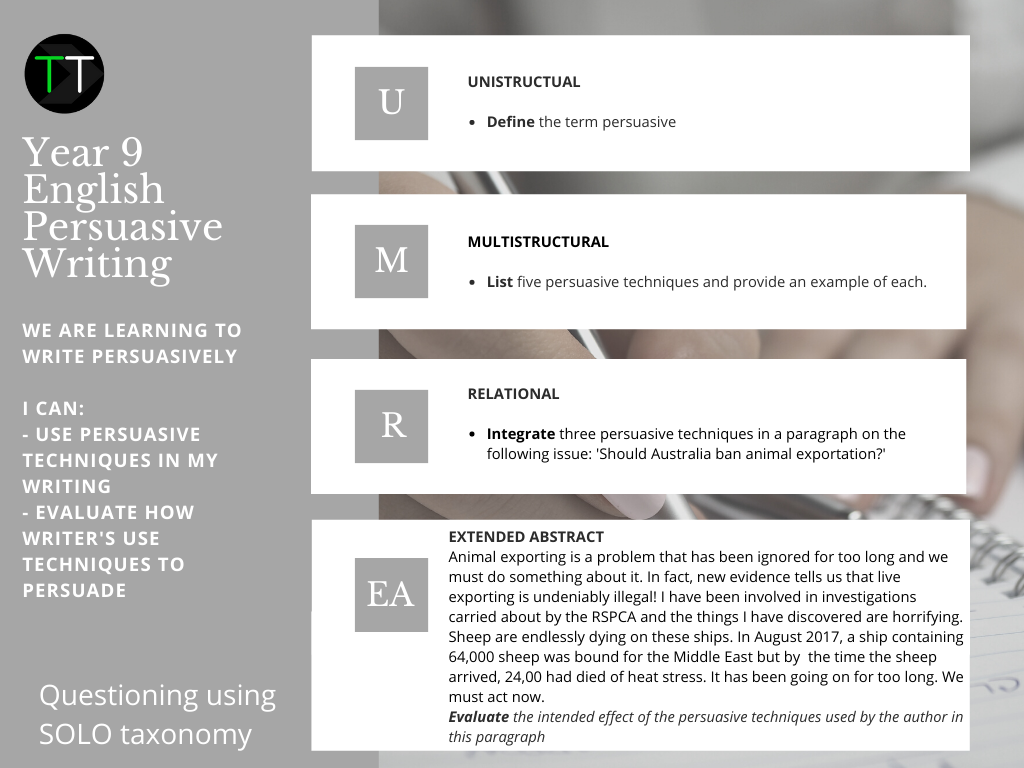Flying SOLO
In our last post, we looked at task words and how we can support students in understanding and responding to the differences in them. This week, we look at how we can design questions (with task word stems) to scaffold learning and differentiate in our classroom.
Many of us have heard of and used Blooms taxonomy to design questions and tasks for our students, but have you heard of SOLO taxonomy? First proposed by John Biggs and Kevin Collis (1982), the taxonomy is based on levels of ascending cognitive complexity, which makes it the perfect tool for scaffolding learning and assessment tasks, as well as supporting students at the level they are students working at. SOLO is an acronym for the Structure of the Observed Learning Outcome and essentially describes levels of increasing complexity in a student’s understanding of performance tasks and subject material.
The SOLO taxonomy classifies understanding into five (5) levels and moves from concrete to abstract. We have listed the first stage (prestructural) as a zero, as at this stage, the student just does not demonstrate understanding.
0. Prestructural: the learner is missing the point
Unistructural: a response based on a single point.
Multistructural: a response with multiple unrelated points.
Relational: points presented in a logically related answer.
Extended abstract: demonstrating an abstract and deep understanding through application to new contexts.
It is important to remember that depth is not the same as difficulty. All stages can be difficult, but the latter levels are where the learning requires depth and the use of higher order thinking skills, rather than just attention to details.
We like to use SOLO taxonomy to design questions, whether they be for course work or learning outcomes. The best thing about this style of questioning is that it scaffolds learning by gradually increasing the difficulty of the question. For this reason, it works well to begin at stages one and two (unistructural and multistructural) when introducing content and new skills, before moving to stage three and four (relational and extended abstract) once students have a strong foundation.
It is also worth auditing your exams and assessments to check that you have questions that vary in difficulty. A good rule of thumb is to ensure that approximately 25% of questions are unistructural , 50% are multistructural and/or relational, and 25% are extended abstract. Just look for the task word stems to help you do this. By designing assessment in this way, it allows for weaker students to still experience some form of success and build their confidence, whilst allowing stronger students opportunity to fully demonstrate the scope of their understanding.
Below are some examples of how SOLO taxonomy can be used in a classroom context.
Another benefit of using this style of questioning is that it supports differentiation in the classroom. Considering that research has found that students already know 40-50% of the material teachers cover in class (Graham Nuttal, 2007), it is essential that we provide opportunities for students who already know the content to be challenged and extended. At the same time, questioning using SOLO taxonomy provides support for students who find the content difficult or are just learning it for the first time. I will often set all the questions, but target certain students to begin at different stages based on their prior learning and performance - and because all students have the same set of questions, the fact that the task requirements may be a little bit different for some is not obvious. We have used SOLO taxonomy to create free worksheets for you to use with your class. Click the links below to download.
History resource
Business Management resource
If you would like to read more about SOLO taxonomy, I recommend checking out Pam Hook’s website HookED where you can also download more free resources.
We’d love to hear from you if you design your questions in this way - if you’re happy to share, please post some samples of your questions below to support more teachers who are using SOLO taxonomy in their classrooms.
References:
Biggs, J. B., & Collis, K.F. (1982). Evaluating the quality of learning. The SOLO taxonomy (Structure of the Observed Learning Outcome). New York: Academic Press
Nuttal, G. (2007). The Hidden Lives of Learners, NZCER Press.






